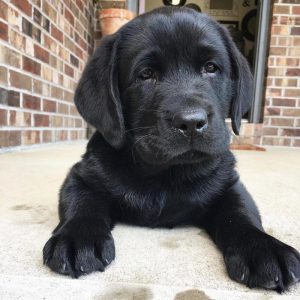House training your puppy is one of the most important tasks for new pet owners. It requires patience, consistency, and positive reinforcement. This guide will help you understand the process and provide you with practical steps to successfully house train your new furry friend.
Why House Training is Important
House training is crucial for several reasons:
- Hygiene: It keeps your home clean and free from unpleasant odors.
- Behavior: It teaches your puppy good habits and prevents future accidents.
- Bonding: It strengthens the bond between you and your puppy through positive interactions.
When to Start House Training
The best time to start house training your puppy is as soon as you bring them home, typically around 8 to 12 weeks of age. Puppies have small bladders and need frequent bathroom breaks.
H1: Preparing for House Training
Setting Up a Designated Area
Choose a specific area in your home where your puppy can relieve themselves. This could be a spot in your yard or a pee pad area inside.
Gathering Supplies
You will need:
- Crate: For crate training and to limit your puppy’s access to the house.
- Leash: For taking your puppy outside.
- Treats: For positive reinforcement.
- Pee Pads: If you plan to train indoors initially.
H1: Establishing a Routine
Consistent Feeding Schedule
Feed your puppy at the same times every day. A regular feeding schedule will help regulate their bathroom habits.
Regular Bathroom Breaks
Take your puppy outside frequently:
- First thing in the morning
- After meals
- After naps
- Before bedtime
- Every hour for very young puppies
Using a Command
Choose a command like “Go potty” or “Do your business” and use it consistently. This helps your puppy associate the command with the action.
H2: Crate Training
Why Crate Training Works
Crate training is effective because dogs naturally avoid soiling their sleeping area. It also helps with managing your puppy when you cannot supervise them.
Choosing the Right Crate
Select a crate that is big enough for your puppy to stand, turn around, and lie down comfortably but not too large, as this might encourage them to use one corner as a bathroom.
Introducing the Crate
- Make it Comfortable: Place a soft blanket and a toy inside.
- Gradual Introduction: Allow your puppy to explore the crate on their own. Encourage them to enter with treats.
- Short Periods: Start with short periods in the crate and gradually increase the time.
H2: Supervised Time Outside the Crate
Close Supervision
When your puppy is outside the crate, supervise them closely. Keep them in the same room as you, and watch for signs they need to go out, such as sniffing or circling.
Leash Training
Keep your puppy on a leash during bathroom breaks to ensure they stay focused on the task. Walk them to the designated bathroom area and use the chosen command.
H2: Positive Reinforcement
Rewarding Good Behavior
Immediately after your puppy goes to the bathroom in the right place, reward them with praise, treats, or playtime. This reinforces the behavior you want to see.
Avoiding Punishment
Never punish your puppy for accidents. This can create fear and anxiety, making house training more difficult. Instead, clean up accidents with an enzymatic cleaner to remove odors.
H2: Dealing with Accidents
Stay Calm
Accidents will happen. Stay calm and clean up the mess without scolding your puppy. Interrupt them with a clap if you catch them in the act and take them to the designated area.
Consistent Cleanup
Use an enzymatic cleaner to thoroughly clean any accidents. This removes the smell and discourages your puppy from using the same spot again.
H2: Nighttime Training
Setting a Night Routine
Before bedtime, take your puppy outside for one last bathroom break. Keep the crate in your bedroom initially so you can hear if your puppy needs to go out during the night.
Nighttime Breaks
Very young puppies may need to go out during the night. Set an alarm to take them out halfway through the night if needed.
H2: Transitioning to More Freedom
Gradual Increase in Freedom
As your puppy becomes more reliable, gradually increase their freedom in the house. Start with one room at a time and supervise them closely.
Continued Supervision
Even as your puppy gains more freedom, continue to supervise them until you are confident they are fully house trained.
H3: Common Challenges and Solutions
Regression
It’s common for puppies to regress in their training. Stay consistent with your routine and reinforce good behavior.
Stubborn Puppies
Some puppies take longer to train. Be patient and keep using positive reinforcement.
Separation Anxiety
If your puppy has separation anxiety, they may have accidents when left alone. Gradual desensitization to being alone and crate training can help.
H3: House Training Older Dogs
Different Challenges
House training an older dog can be more challenging but is still achievable. They may have ingrained habits that need to be changed.
Consistency and Patience
Use the same techniques as with puppies, but be prepared for a potentially longer process. Consistency and patience are key.
Conclusion
House training your puppy is a vital step in ensuring a happy and healthy relationship with your new pet. By establishing a routine, using positive reinforcement, and staying patient, you can successfully house train your puppy. Remember, every puppy is different, and some may take longer to train than others. Stay consistent, and your efforts will pay off with a well-trained, happy puppy.
FAQs
- How long does it take to house train a puppy?
- It varies, but most puppies can be house trained in 4 to 6 months with consistent training.
- What if my puppy has accidents in the crate?
- Ensure the crate is the right size and that you are taking your puppy out frequently enough. Accidents in the crate may indicate the need for more bathroom breaks.
- Can I use pee pads for house training?
- Yes, pee pads can be useful, especially for apartment living. Gradually transition to outside training as your puppy grows.
- How do I prevent my puppy from going to the bathroom indoors?
- Supervise closely, establish a routine, and use positive reinforcement. Clean accidents thoroughly to remove any scent markers.
- Is it too late to house train an older dog?
- No, it’s never too late. House training an older dog may take more time and patience, but it’s entirely possible with consistent training.


